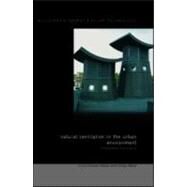- ISBN: 9781844071296 | 1844071294
- Cover: Hardcover
- Copyright: 10/30/2005
* Provides building professionals with knowledge, tools and information on the efficient use of natural ventilation in urban buildings * Key design principles are explained, enabling readers to decide on the best solution for building ventilation, taking into account climate and building context * Includes free CD-ROM with software for assessing the potential for natural ventilation of a given site by comparison with base sites. The methodologies and tools are tested, self-contained and user friendly Natural ventilation reduces the energy consumption of a building by minimizing the use of air conditioning and mechanical ventilation. This book focuses on natural ventilation in an urban context. The basic principle of natural ventilation in urban areas is as follows: for a building located in a given urban environment, find the pressure differences across the building envelope (or the natural ventilation potential) and then optimize the airflow function (or optimally design the openings) in order to obtain the airflow that ensures indoor air quality and comfort with minimum energy consumption. The book covers assessment of the pressure and temperature distribution around buildings in an urban context and guides the reader toward appropriate solutions for different classes of urban environment and building typology. It is self-contained and will be an essential resource for professionals and students when adopting energy-efficient strategies in building design.







